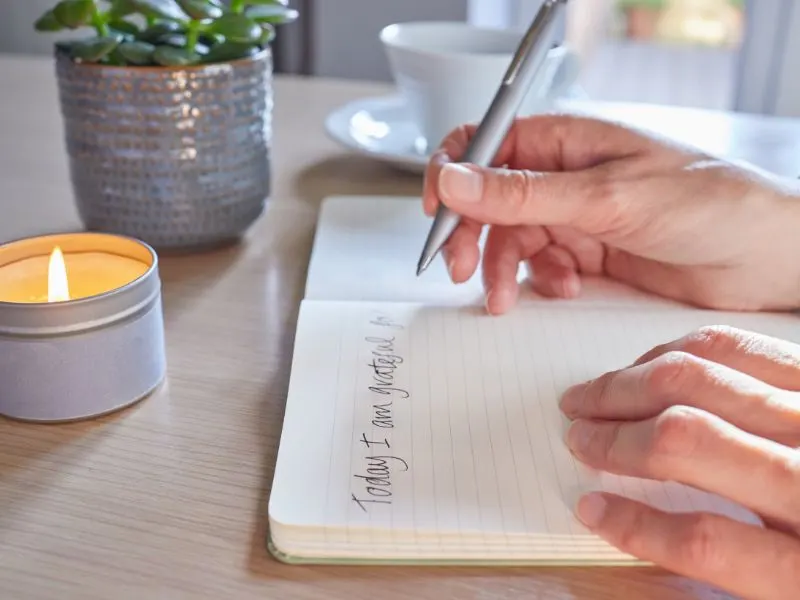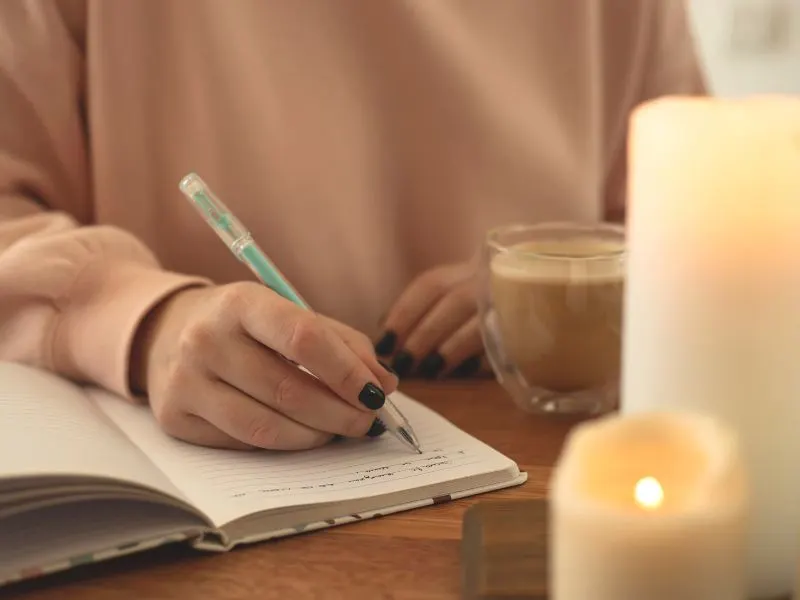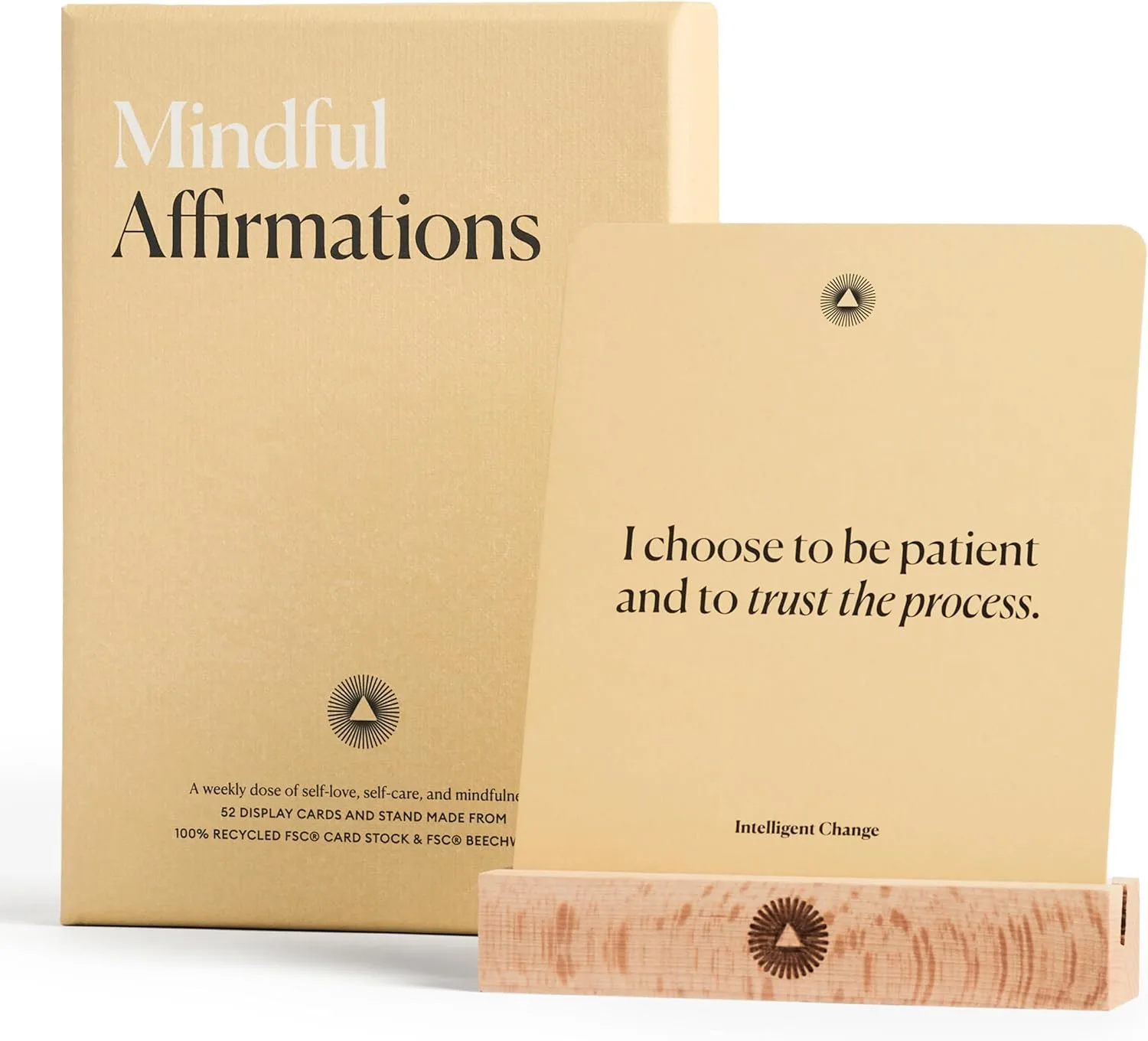Practicing gratitude daily can have profound effects on both mental and physical health as well as on extrapersonal relationships. When you incorporate gratitude into your daily routine, you experience less stress, higher self-esteem, and greater life satisfaction. In this article, we unpack these benefits of thankfulness and look at how to practice gratitude practically. We’ll also show you how to build it into your existing routines so it doesn’t just become another item on the to-do list but a life-giving experience that has ripple effects on every area of your life.

Affiliate disclosure: This post may contain affiliate links, which means we may receive a commission if you click a link and purchase something that we have recommended. Please read our disclaimer for more details.
Understanding Gratitude
Before discussing how to cultivate gratitude and positivity, let’s look at what gratitude is and how it benefits you. Contrary to what some believe, gratitude isn’t just for happy people and it’s not an instant fix for unhappiness, though it can certainly help improve your outlook on life.
Gratitude is feeling thankful for benefits received and expressing this thanks inwardly or externally. Gratitude does not need to be stated to another person to have its full impact. The act of contemplating your thankfulness and contentment is a meaningful practice on its own.
A sense of gratitude sometimes develops spontaneously but other times you need to give it a little encouragement. It comes when you recognize and acknowledge gratitude in your daily experiences, which depends on your capacity for self-awareness and tuning into your emotional landscape. Later in this post, we’ll look at several practices and habits you can develop to increase these skills and better your chances of feeling naturally positive about the various aspects of your life.
Benefits of Gratitude
Gratitude is the antidote to many states of mental malaise, including discontentment, envy, resentment, and ennui. It also has positive implications for your physical health, emotional outlook, and extrapersonal relationships.
Mental Health Benefits
Developing a regular practice of gratitude can improve your overall mental health. It has been shown to lower cortisol levels, which reduces overall stress. Lower stress, in turn, reduces your risks for anxiety and depression, improves mood, and leads to better focus and concentration.
Depression often involves persistent negative thoughts including self-criticism, hopelessness, or rumination on past failures. Practicing gratitude interrupts this cycle and helps you focus on the good things in your life, such as meaningful relationships, accomplishments, or simple moments of joy.

Not only does gratitude improve your current mental health outlook, it can also help you become more emotionally resilient, allowing you to bounce back more quickly from adversity you will face in the future. It enhances your coping abilities, builds up your positive mindset, and teaches you to reframe challenges more instinctively, helping you avoid falling into the negative thoughts trap again in the future (and getting out of it more easily when you do fall into it).
Enhanced Self-Esteem and Confidence
Focusing on the positive things in your life helps you acknowledge your strengths, accomplishments, and positive qualities, giving your self-confidence and self-worth a healthy boost. The more you shift your focus away from what’s lacking in your life to what is already going well, the less you’ll want to focus on your shortcomings or perceived failures.
Acknowledging and embracing everything you already have also makes it less likely that you’ll compare yourself to others and come up feeling empty. Envy can be a powerful sign in our lives that helps us identify areas for future goals and notice where our own circumstances may not align with our values and dreams, but when it becomes something you ruminate on, it’s no longer healthy or purpose-serving. Take the time to reflect when you notice feelings of envy and analyze where they are coming from. Take any helpful insights away from the situation that you can and then combat those feelings with one of your gratitude practices.
Strengthened Relationships
Although gratitude doesn’t need to be externalized to be real and meaningful, taking the time to express your gratitude to others can enhance your relationships and strengthen your social support network. In this way, the benefits of your grateful state of mind extend beyond you to the people in your life.
This process is a positive reinforcing loop—the strong relationships you develop will bring you greater joy, contentment, and gratitude, which you can then reinvest in your relationships, making them even stronger.
Better Physical Health
Even your physical health benefits from practicing gratitude. Because you are less likely to be stressed, your immune system can function optimally, decreasing your risk of infections and illnesses. Likewise, as expressing your gratitude decreases anxiety and helps calm the mind, you are also more likely to experience improved sleep quality.
As you develop your daily gratitude practice, you may find you’re more likely to engage in other healthy activities such as regular exercise and balanced eating. These can have further positive impacts on your mental health, self-esteem, and confidence, compounding the benefits of gratitude even more.
Fewer Negative Emotions
As we’ve already touched on, practicing gratitude is likely to lead to a decrease in negative emotions. Negative emotions can have the opposite effect on our mental and physical health than practicing gratitude. When we persistently gravitate toward negative thoughts and feelings, we become overwhelmed with anger, sadness, and frustration which increases our cortisol and chronic stress levels. It also leaves us at risk of mood disorders, depression, and dangerous cycles of rumination and self-criticism.

In our bodies, just as gratitude increases our immune system and helps us engage in activities that leave us more energized, negative emotions impair immune function and can lead to fatigue, reduced motivation, and decreased cognitive abilities. Even more worryingly, they can strain our relationships and interactions with others.
Reframing negative situations to see the positive angle or lesson these circumstances offer gives us a new perspective and helps us see things in a better light. Shifting focus from the negative to the positive improves overall outlook on life.
To further combat negative emotions, try:
- Practicing self-compassion during difficult times
- Engaging in light or restorative physical activities such as walking or yoga
- Connect with friends, family, or support groups
- Practice mindfulness and relaxation techniques
- Set realistic goals
- Develop better problem-solving skills
- Engage in creative outlets
- Limit exposure to stressors such as social media or environments where you feel uncomfortable
- Seek professional help
Enhanced Life Satisfaction
The more you practice gratitude, the more life satisfaction you’ll experience. Learning to focus on the positive aspects of your life and the joy they bring you will, over time, give you a more optimistic perspective and a greater appreciation for life. Reliving positive experiences and emotions can reinforce their impact, giving you the chance to enjoy them beyond the moment in which they occur. This can provide a significant counterbalance to any pessimistic tendencies you’re prone to and rewire your brain for thanksgiving.
Keeping a gratitude journal or list or regularly using a gratitude app can give you a host of small joys to look back on when you need a reminder of the wonderful things in your life.
Now that you know why you might want to practice gratitude, let’s look at how you can make a conscious effort to do so.
When It’s Okay to Not Be Grateful
In this article, we are focusing primarily on the benefits of gratitude and how to practice it, but this encouragement must come with a warning. Just because building a positive mindset is helpful doesn’t mean you have to (or should) work on it all the time. There is a time and a place for everything, including your efforts at gratitude.
Dr. Jamie Zuckerman coined the term toxic positivity to refer to the excessive promotion of positive thinking. If we feel that we or others have to put a positive spin on every single situation, we will do ourselves a massive disservice and actually cause harm.
Not every situation is positive. Losing a loved one, getting let go from a job, ending a relationship you weren’t ready to end, watching a friend make harmful choices—it’s nearly impossible to find the silver lining in these inevitable life events.
It’s also unnecessary.
As emotionally mature adults, we want to be able to experience the full gamut of emotions, not just the positive ones. Trying to remain positive in the face of grief and extreme hardship takes away that opportunity and gives us a shallow experience of humanity. It will also damage our mental health and well-being as well as our relationships with others. It is one hundred percent okay (and necessary) to take time to grieve losses and difficult times.
At the same time, learning to practice gratitude and cultivate a positive outlook during the other seasons of life can help us better weather those storms by preparing us mentally and physically to cope with the stress and barrage of emotions they’ll certainly bring. That’s not to say that you’ll bounce back right away (or that you’d even want that), but that being in a healthy place helps you deal with hardships in a healthier way.
Simple Ways to Cultivate Gratitude
Grateful people don’t always experience gratitude naturally. Many of them have to work at it and remind themselves often to take a more optimistic outlook on life. Here are some of the most popular options for helping you get into the habit of practicing gratitude.
Daily Gratitude Journal
You can use any journal you like for this exercise, including a digital file like a Google or Word Doc. Take a few minutes each day, perhaps when you wake up or before bed, to write down things you are grateful for. You may want to set a target number of things (3-5 is usually manageable) or number of minutes (5-10). Don’t limit yourself to writing down the physical things in your life. Be sure to include people, experiences, things you’re looking forward to, and even things about yourself that you like.
Example: “Today, I’m grateful for the beautiful end-of-summer weather, the medicine that’s helping my daughter recover from her illness, and the quiet of the library study room.”

Gratitude List
As an alternative to gratitude journaling, you could keep a simple list of things you’re grateful for. You could do this on a whiteboard, in a journal, or on a pad of paper. Even a Notes file on your phone would work well. It doesn’t matter the medium; choose what will work for you without barriers so you’ll be more likely to stick to it. Add a handful (or more) of items to your list daily as they come to you.
Example:
– Not having to carry my dirty clothes to a laundromat
– Getting to spend half an hour reading a book alone
– The healthy dinner my friend made for me last night.
Gratitude Meditation
When the list of blessings doesn’t come easily, it might be more helpful to meditate on the things you’re thankful for. Choose one thing that stands out to you—the hour-long phone call you had with a relative, say—and hold this event in your mind, reflecting on how it made you feel. What was special about it? Why is that person meaningful to you?
Example: Spend 5-10 minutes sitting in a quiet space, taking long, slow breaths, and silently expressing thanks for that experience.
Gratitude Affirmations
Some people find it helpful to practice affirmations. These are simple mantras that you say, read, or reflect on frequently (usually multiple times per day). They can help you rewire negative thoughts and replace them with positive ones, develop a more constructive outlook, and improve self-esteem.
Example: Write an affirmation such as “I’m grateful for the love and support of my family,” on a flash card that you carry around and look at throughout the day. Whenever you read or say it, take a moment to let those positive emotions supersede any negative thinking you happen to be experiencing in that moment.
Gratitude Apps
Another way to incorporate gratitude into our daily lives is to use an app such as Gratitude Journal, Gratitude Jar, or Morning!. While each app has its unique features, you can generally expect some type of daily gratitude journaling prompt to get you started with your personal reflection as well as an opportunity to respond in-app. Some apps also have gratitude games and mood-tracking features to incentivize users to open them more regularly.
Example: Your gratitude app might prompt you with questions such as “What made you smile today?” or “What are you most thankful for?”
Here are some tools to help you get started:
Other Ways to Express Gratitude in Daily Life
The list above should give you a good starting point for your gratitude journey. If you want to take it beyond the basics, here are a few other activities to try.
Gratitude Letters
If you decide to get into the habit of expressing your gratitude to others, you can start writing cards or letters to express your appreciation to those who have impacted you. Be specific when you tell them what you appreciate about them and the impact it’s had on you. This exercise can have a profound impact on the recipient who likely has no idea how much they are blessing other people.
Sometimes, the person you are grateful to is no longer in your life for whatever reason. It can still be cathartic to write the letter or card, even if you don’t give it to them. The act of writing the message as if you were going to share it with them will help you focus your thoughts and more clearly articulate your thankfulness.
Attitude of Gratitude
You’ve likely heard the expression ‘Attitude of Gratitude’, but what does it mean on a practical level? Changing our attitudes toward others and our interactions with them is not as easy as just snapping our fingers and demanding that our brains shift gears immediately.
Developing an attitude of gratitude means learning to consciously acknowledge and appreciate the positive aspects of your communications with others. Look for ways to remind yourself to focus on the positive qualities of your friends, colleagues, or family members when they start to get on your nerves. This might involve some upfront work, meditating on, and listing these positive qualities so you have them at the ready (in your mind) when you need them. Doing so will have a huge overall positive impact on your relationships, even those that are chronically difficult.
Notice the Little Things
Sometimes we fall into the trap of thinking only the large things in life are worth expressing gratitude for—the expensive present, the profound act of service, the delicious meal served at a dinner party. These are all wonderful things, but the smallest things in life are just as worthy of our appreciation. Even more importantly, they are in great abundance, which allows us to practice gratitude constantly rather than waiting for those special moments to crop up.
Take the time to notice and appreciate the small, everyday moments that bring you joy. From the smell of hot soup on the stove to an unexpectedly quiet morning, to a sunny break in the middle of a rainy day, learning to live in the present moment will help tune your attention to these many small wonders.
Gratitude Rituals
If you’re finding it difficult to incorporate a gratitude practice into your day, why not try adding it to one of your existing routines, such as your mealtimes, morning routines, or bed routines? Perhaps each family member could say one thing they’re grateful for over dinner, or you could add it to your morning journaling session.
The rest of this article will focus on how you can incorporate gratitude into your existing routines.

Developing a Daily Gratitude Routine
Life is busy, and fitting one more thing into the schedule isn’t easy. You may not want to try and fit “being grateful” onto your already too-long to-do list. I hear ya! The last thing we need is something else to check off. An easy way to get around this feeling is to build gratitude into the things you’re already doing each day.
Sample Daily Gratitude Routine
Morning
- Wake-Up Reflection (5 minutes)
- As you wake up, take a few moments to reflect on what you’re grateful for. You might even do this while lying in bed, waiting for your eyes to adjust to the light and your feet to prepare themselves for touching the cold floor.
- Example: “I’m thankful to wake up to this new day. I’m thankful that I had a restful night and that I have the energy to take on the opportunities this day presents. ”
- Gratitude Journal (5 minutes)
- After your morning reflection, write down a few things you are grateful for. You could do this while waiting for coffee to brew or make a voice memo while walking your dog.
- Example: “I am grateful for hot coffee, my pets, my family, and the warmth of my house on cool mornings.”
Midday
- Gratitude Reminder (1 minute)
- Set a visual reminder or use a gratitude app to prompt you to pause and think about what you’re thankful for during the day. This could be a sticky note on your computer or a notification on your phone.
- Example: Take a moment during lunch to acknowledge something positive about your day so far.
Evening
Choose one of the following activities or something else from one of the lists above.
- Gratitude Meditation (5-10 minutes)
- This could be done before you go to bed as you prepare to wind down for the day. If you already exercise or journal at night, this would be a good time to work in your habit. Spend a few minutes in quiet meditation focusing on the things you are thankful for.
- Example: Before you get into bed, choose something you’re grateful for, close your eyes, and spend a few minutes focusing on what you appreciate about that thing/person specifically.
- Gratitude Reflection (5-10 minutes)
- Reflect on the moments of the day that brought you joy or satisfaction. Write down any additional thoughts in your gratitude journal or acknowledge them mentally.
- Example: Reflect on the day’s highlights and write down how specific events made you feel thankful.
- Gratitude Letter (5-10 minutes)
- Write a short letter, note, or text to someone expressing your appreciation. Thank them for something specific they’ve done or a particular aspect of their personality you love.
- Example: Write a thank-you note to a colleague who helped you with a project or a friend who offered support.
Tips for Success
New habits take time to build, but if you can stick with them, they’re usually worth the effort. Here are a few last tips to help you get started.
- Be consistent. Aim to practice gratitude at the same time each day.
- Be specific. Focus on specific events, people, or things rather than general statements.
- Stay positive. Even on challenging days, try to find something positive to focus your gratitude on.
- Be flexible. Adjust your routine as needed to fit your schedule and preferences.
- Practice mindfulness. Focus on the quality of your gratitude practices rather than quantity. Deep, sincere appreciation can be more impactful than a longer routine.
Think Grateful Thoughts
In this post, we’ve looked at the far-reaching positive impacts of practicing gratitude. With improved mental and physical health, enhanced self-esteem and confidence, and better relationships as rewards, who wouldn’t want to latch onto this vital practice? And with a variety of easy options from journaling to meditation to apps, there are opportunities to fit gratitude into your daily routine, no matter how busy it is. Developing a grateful mindset isn’t just a short-term fix for unhappy thoughts. Rather, it’s a lifelong investment in your own well-being and that of the people in your life.

Sophie Agbonkhese is a writer, homeschooling mother of four, and a recovering overachiever (who occasionally relapses). She is the founder of My Cup Runs Over, a site dedicated to helping busy women simplify and enrich their lives. When she’s not writing or debugging websites, Sophie spends her time reading, dancing, bullet journaling, reading, gardening, listening to audiobooks, and striving fruitlessly to have a clean house for at least five minutes.




